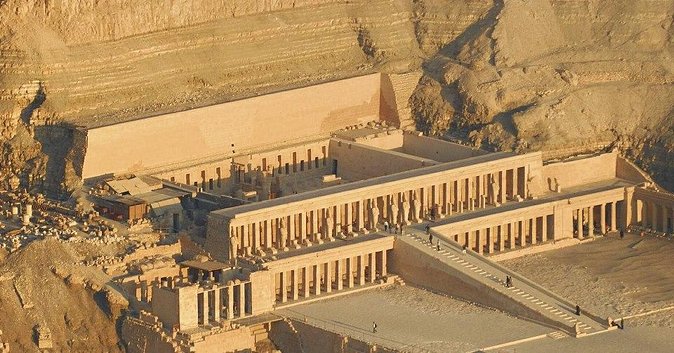
The Majestic Temple of Hatshepsut at Deir el-Bahari
The Temple of Hatshepsut, nestled amidst the breathtaking landscape of Deir el-Bahari in Egypt, is a true testament to the grandeur and architectural brilliance of ancient Egypt. This magnificent temple, dedicated to Queen Hatshepsut, is a captivating blend of history, art, and religious symbolism. Join us on a journey as we unravel the secrets and marvel at the beauty of the Temple of Hatshepsut.
1-Historical Significance:
The Temple of Hatshepsut, also known as Djeser-Djeseru, meaning “the Holy of Holies,” was constructed during the 15th century BC. It serves as a tribute to the reign of Hatshepsut, one of the few female pharaohs who ruled over Egypt for more than two decades. The temple not only celebrates her achievements but also showcases her divine lineage, as she claimed to be the daughter of the god Amun.
1-The Legacy of Queen Hatshepsut
Queen Hatshepsut, often regarded as one of the most powerful women in ancient Egypt, left an indelible mark on history. Known for her unparalleled reign and ambitious projects, she commissioned the construction of the Temple of Hatshepsut as a testament to her divine lineage and political prowess. This temple stands as a symbol of her reign and divine connection to the gods.
2-: Architectural Marvels of the Temple
The Temple of Hatshepsut is a marvel of ancient Egyptian architecture. Its design seamlessly integrates with the natural rock formations of Deir el-Bahari, creating a harmonious blend of nature and human ingenuity. The temple is characterized by its impressive colonnades, terraces, and intricate reliefs that depict scenes from Hatshepsut’s reign and the ancient Egyptian pantheon. As you explore the temple, you can’t help but be awestruck by the precision and artistry displayed in every detail.
3-Religious Importance:
The Temple of Hatshepsut served not only as a royal mortuary temple but also as a place of worship. The sanctuaries within the temple complex were dedicated to various deities, including Amun-Ra, Anubis, and Hathor. These gods were believed to provide divine protection and guidance to Hatshepsut during her reign. The temple’s strategic location, nestled against the cliffs, was considered a gateway between the earthly realm and the afterlife.
4- Symbolism and Spirituality
Ancient Egyptians placed great importance on religious symbolism, and the Temple of Hatshepsut is no exception. The temple’s structure and layout reflect the spiritual beliefs and rituals of the time. The sanctuaries dedicated to various gods and goddesses, such as Amun-Ra and Hathor, were intended to honor and appease these deities. The temple’s alignment with the sun’s path also speaks to the ancient Egyptians’ connection with cosmic forces and their quest for divine harmony.
5-Unveiling the Reliefs
The walls of the Temple of Hatshepsut come alive with vibrant and meticulously carved reliefs. Journey into the past as we decipher the stories depicted in these remarkable artworks. From scenes of Hatshepsut’s divine birth to her monumental expedition to the land of Punt, each relief offers glimpses into the pharaoh’s life and the religious beliefs of the time.
5-Restoration Efforts and Preservation
Over the centuries, the Temple of Hatshepsut suffered from natural deterioration and human interference. However, extensive restoration efforts have been undertaken to preserve and showcase its magnificence. UNESCO, in recognition of its cultural significance, designated the temple as a World Heritage Site. Through ongoing conservation projects, visitors can now witness the temple in much of its original splendor, allowing us to appreciate the mastery of ancient Egyptian craftsmanship.
The Temple of Hatshepsut is a monument to the outstanding accomplishments of ancient Egypt. Its architectural marvels, religious symbolism, and the legacy of Queen Hatshepsut herself continue to inspire awe and admiration. Whether you visit it in person or explore its wonders through virtual means, the Temple of Hatshepsut is a must-see destination for anyone seeking to delve into the captivating history and culture of ancient Egypt, Book Luxor Tours With Jana Tours Now

